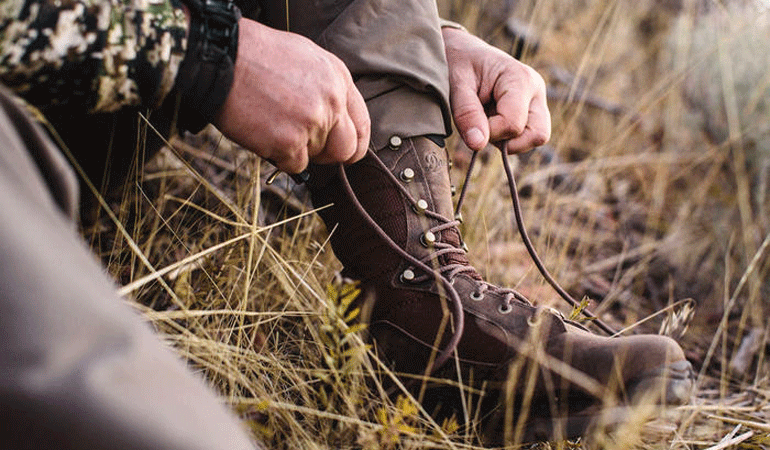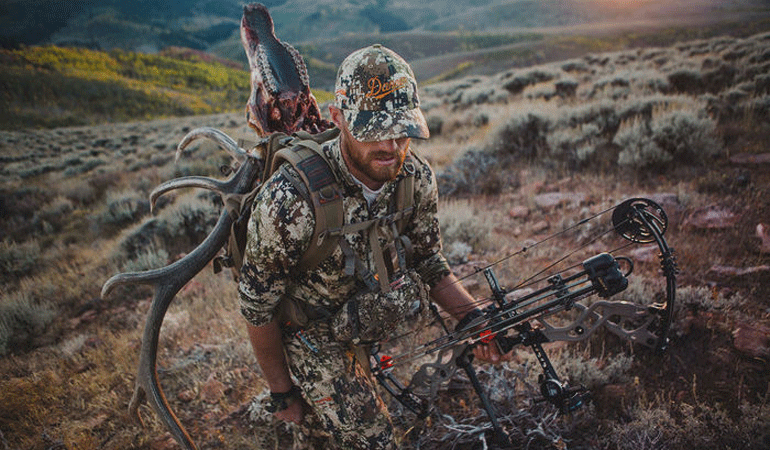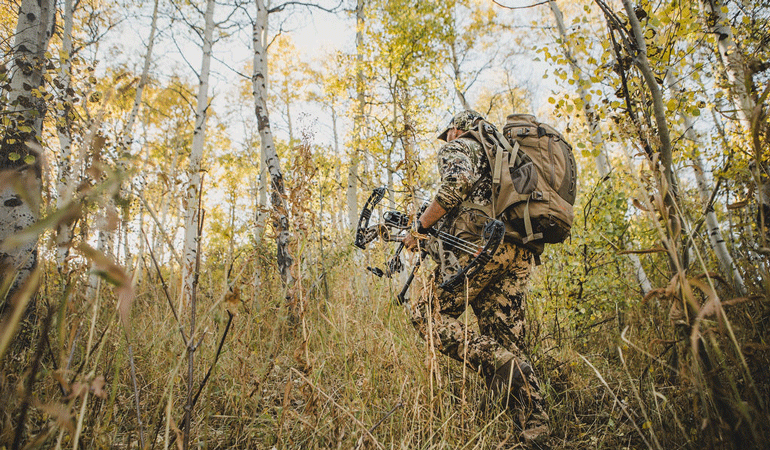
Five years ago I ditched the couch potato lifestyle and started running. It sucked, but as I got into the process I realized that I didn’t hate it as much as I expected — at least most of the time. The runs that were chock-full of misery were those where I didn’t get much sleep the night before or where my feet were beat up.
As far as sleep, that’s fodder for a different article. When it comes to foot-care, I found a few things to be helpful that have migrated from my life as a runner to my life as a hunter. And while it may not seem like a big deal, especially to the whitetail hunter, good footwear is a game-changer.
Here’s why:
From Deer To Elk & Back Again
As a traveling bowhunter, I use to think about western hunting much differently than my midwest whitetail adventures. That’s not the case anymore, and my hunting tactics have converged to mirror both pursuits more closely than I ever thought possible — and so has my choice of boot.
While I do like knee-highs for some whitetail hunting, particularly if I need to wade through a creek or a swamp to get to my spots, I’m mostly reliant on quality leather boots — the kind that are a necessity in the elk mountains.

The first thing worth looking for, whether you’re a deer hunter, an elk hunter — or both — is comfort. This is a no-brainer but it’s amazing how a little extra weight or some stiffness in the wrong spot can turn miserable after a few miles. Comfort starts with fit, of course, so if you’re not wearing the right size of boots you’re already in trouble. You might think you can make up for the difference with your sock choice, but you can’t. One hike up a mountain or into the woods to check trail cameras and you’ll be deep into regret and blistered up.
Wear the right-sized boots, and pay attention to how tall they are. Light hikers that fit like running shoes are comfortable, but they belong on trails and not in the timber. For hunting and scouting you need some support, and for most of my pursuits I’m looking for boots that are at least eight inches tall.
This is important in the whitetail woods, but a game-changer in steep terrain. Naturally, it’s easy to think about the uphill aspect of elk hunting and the support your feet will need, but it’s the side-hilling and downhill treks that will get you.
Side-hilling, with 40 pounds in your pack, is a great way to figure out how much support your boots offer. Add in an elk quarter and a lot of extra weight, and you’ll really understand what you’re dealing with when it comes to potential ankle sprains or worse.
For the downhill treks — which tend to be more dangerous than uphill because you’ve got loose rocks and gravity conspiring against you with each step — you’ll need support on the top and the bottom of your boots. Quality tread, the kind designed to grip where grip isn’t easy to find, can keep you upright and in one piece. That’s something hard to understand when you’re breaking your boots in at home in Michigan or Pennsylvania and not faced with the reality of elevation and the up-and-down places elk and mule deer call home.
Whitetail Considerations
Maybe you won’t hunt elk — that’s okay. If you stick to the whitetail woods you may wonder why you need a good pair of boots. Well, you can roll your ankles in deciduous forests, too. While falling down a river bluff isn’t as dangerous as falling down a mountain, it’s not that much fun either. And it’s really not fun in the dark when you’re slipping in to a rut stand you’ve been saving for just the right conditions.
The kind of tread that will help you in the mountains will also help you at home on the whities, and in other situations, might save your hide as well. Last fall, while bowhunting some public land in Oklahoma, I was blessed with a buzzer-beater buck. I watched him tip over as the light faded on my last night down there and to put it mildly, was pretty jacked up about filling my tag.
When I climbed down to go look at him, my knee-high boot slipped off of my climbing stick and caused a puckering, find-religion-now moment even though I was attached to a lifeline. The upshot here is that well-designed tread is good for more than the mountains…
Danner Pronghorn — Fifth Generation
The boots that are winning me over this year — and that I’ve scouted deer in, hung stands while wearing, and are traveling with me 19 hours west to hunt elk in Colorado — are the Danner Pronghorns. I’ve covered more ground while bowhunting in the Pronghorns over the years than any other boot, and their latest version is the fifth generation, which represents a new-age return to the old classic 851 design.

This means that the fit and comfort level of these new Pronghorns is off the charts, but now those attributes are combined with the TERRA FORCE® NEXT™ platform, which is designed to promote all-terrain arch support, stability and torsion control. They are also built with Vibram® Pronghorn Outsoles so that there will be no complaints when it comes to traction no matter what type of terrain you hunt.
Pronghorns are also waterproof thanks to a GORE-TEX membrane, and can be ideal for mid- to late-season hunts if you opt for the insulated versions (400g or 800g PrimaLoft®). Unlike similarly priced offerings that claim to be waterproof, these Pronghorns are also incredibly breathable. That’s one of those things that is hard to appreciate until you’re putting on the miles in the early season.
The real kicker, at least for yours truly, is that for half of the price of competitor’s boots, you can get the Pronghorns and know that they’ll last. The most disappointing boot experience of my life was finally getting my hands on a pair of $500 leathers, only to toss them two seasons later because they had fallen completely apart. My last pair of Pronghorns lasted me three times as long, and that’s through a lot of use. This is one of the many reasons that for almost two decades, Pronghorns have been the go-to choice for western hunters and whitetail junkies alike, which is something not destined to change any time soon thanks to the newest version.
Conclusion
No matter what you hunt, or how you scout, quality footwear is key. Find yourself a pair of boots that will allow you to do the things you need to do to be successful and remember that the right boot can take you across the flattest whitetail territory as well as up the steepest mountain basin, so choose wisely.











































